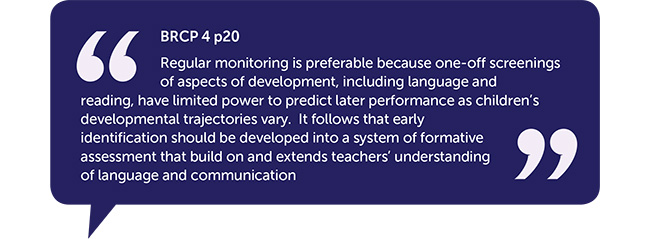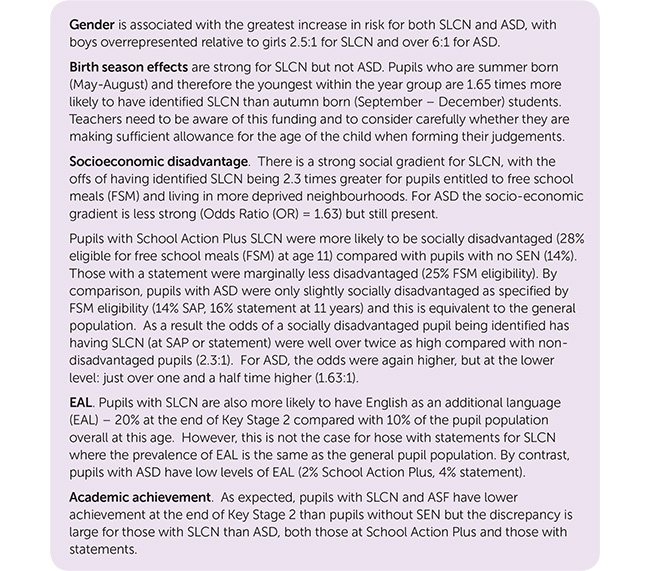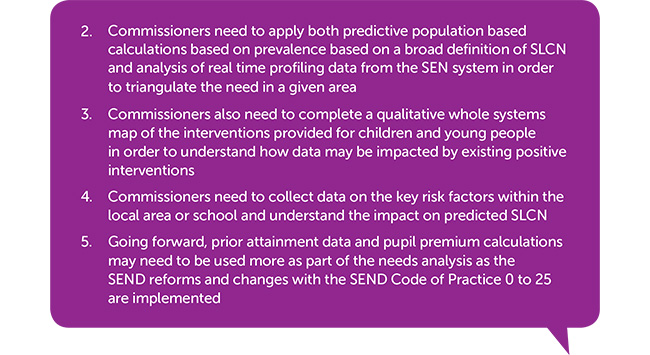Effective identification of SLCN requires regular monitoring of children’s outcomes
The BCRP research found that profiling of children’s skills and areas of need, such as using the Early Years Foundation Stage Profile, is an effective way of identifying which children have needs which are met through quality first teaching and a positive language learning environment and which go on to require more specific support. 27 28
The recommendation therefore is to learn from this and to have a continuous formative assessment approach to identification and not a ‘snap-shot’ approach that is required by education establishments completing the SEN census data.29
For commissioners undertaking needs assessment, this finding suggests that gathering profiling information from the EYFS and considering attainment data for language and literacy at KS2 will provide useful information over time for a cohort of pupils in a local area and/or school.

Prevalence and associated risk factors that predict SLCN
The BCRP explored prevalence of SLCN and ASD in some detail.30 31 Still working with the SEN census data and therefore the narrow definition of SLCN as a primary SEN category, the rates of identification of SLCN and ASD were found to have increased substantially over the period examined (2005-2011): an increase of 72% in identification of SLCN and an increase of 83% in identification of ASD.32
The associated risk factors that were investigated in order to determine their influence on the prevalence of SLCN and ASD included:
- gender
- date of birth
- socio-economic status
- having English as an additional language
- low academic attainment
The risk factors are summarised in Figure 5 below.
Figure 5: Extract from BCRP 4 Thematic report p.2932
Risk factors for SLCN

Implications for Commissioning

27. Snowling, M. J., Hulme, C., Bailey, A. M., Stothard, S. E., & Lindsay (2011). Better communication research project: Language and literacy attainment of pupils during early years and through KS2: Does teacher assessment at five provide a valid measure of children’s current and future educational attainments? DFE-RR172a. London: DfE. https://www.education.gov.uk/publications/eOrderingDownload/DFE-RR172a.pdf (Technical report: BCRP 14)
29. Snowling, M. J., et al ibid.
31. Lindsay, G., Dockrell, J.E., Law, J., Roulstone, S., & Vignoles, A. (2010) Better communication research programme 1st interim report DfE-RR070. London: DfE. (70pp). http://publications.education.gov.uk/eOrderingDownload/DFE-RR070.pdf
